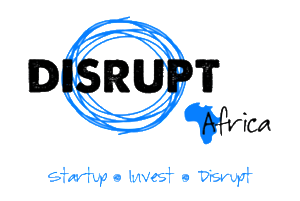Africa has become a hub for innovation in the field of medical diagnostic solutions due to the serious challenges faced in healthcare across the continent.
This is the view of Ilk-nür Hendricks, best practices research analyst at Frost & Sullivan, who highlights a number of company innovating in medical diagnostic solutions. Disrupt Africa has also reported previously on South Africa’s Vula Mobile, which allows rural health workers to liaise with specialists via a smartphone app.
Hendricks says the number of innovations in this area across Africa have sprung from the serious challenges healthcare faces in the region, such as limited energy resources, ‘brain drain’, inaccessibility to medical facilities, limited government funding, and high costs.
Africa bears 25 per cent of the world’s disease burden, yet has only three per cent of the world’s doctors – a physician to population ratio of only 13:100,000. Often, patients are required to travel long distances to gain access to treatment, during which time they have to deal with the region’s underdeveloped road infrastructure.
The continent also suffers from “endless power cuts” and is incapable of meeting the power demand of the region. Meanwhile, there are a growing number of HIV/AIDS patients, which makes it even more difficult for the region’s administrators to recover the general health of its people.
“The high prevalence of HIV/AIDS has placed additional pressure on other related illnesses, such as tuberculosis (TB), pneumonia, diarrhoea, and malnutrition. The spread of these illnesses increases the demand for hospital beds, adversely affecting the quality of treatment that can be metered out, and puts significant pressure on medical practitioners,” Hendricks says.
Help is at hand in tackling the challenges of distance, cost and resources in the form of innovative medical diagnostic solutions, however. Hendricks highlights Cameroon’s Himore Medical, which has designed CardioPad, a wireless solution that enables the efficient monitoring of cardiovascular diseases (CVDs).
“While the majority of cardiovascular specialists practice in the capital city of Cameroon, Yaoundé, 80 per cent of the country’s population lives in rural areas. The CardioPad, therefore, provides improved access to cardiovascular healthcare for patients living in remote areas,” Hendricks says.
“It is a touchscreen tablet smaller than most conventional tablets, making it easier to operate. The device includes a set of four wireless electrodes and a sensor that is attached to the patient’s chest; this generates a signal, which is then transmitted via Bluetooth to the tablet. A digitised electrocardiogram (ECG) of the patient’s heart function is then taken and transmitted through a mobile network to a second CardioPad device – situated in a city hospital – where a registered cardiologist can make a diagnosis.”
Hendricks describes the CardioPad as a “pioneering product” that addresses the low doctor to patient ratio by enabling the successful examination of patients for CVD, remotely. The company is the first on the continent to manufacture a medical tablet capable of changing and saving the lives of CVD patients in rural areas.
Another firm highlighted by Hendricks is Aviro Health, a design and technology company in South Africa that develops digital applications for healthcare practitioners to improve the quality of medical treatment.
“Since most healthcare practitioners in clinics and hospitals in South Africa have smartphones, Aviro Health’s applications can be accessed easily. Its product offerings include applications that help the administration of HIV/AIDS treatment, and e-learning and training platforms, for medical practitioners in the form of e-books and videos,” Hendricks says.
“These applications are available to healthcare professionals in South Africa, Zimbabwe, Mozambique, and Malawi. Aviro Health provides nurses with a platform to learn and extend their knowledge, while keeping them up to date with the most recent guidelines for the administration of antiretroviral (ARVs). This in turn assists them in administering the correct combination of medicines to HIV/AIDS patients.”
The application also provides HIV-positive patients with access to a referral system and a HIV hotline, giving them real-time feedback and guidance to healthcare practitioners for reliable care.
“Aviro Health provides information that is essential for HIV patient management that is often missed in routine examinations,” Hendricks says. “The application enables nurses to treat each patient in less than 10 minute and can be used by any nurse in a primary care setting. This enables the nurse to determine a patient’s eligibility for ARV treatment, which drugs to use, and when to start treatment.”
Finally, Hendricks refers to Botswana-based Deaftronics, which has manufactured the first solar-powered hearing aid unit – Solar Ear.
“In a country where there are only 12 audiologists and 5 audiology centres for a population of over 2 million, this technology is game changing,” Hendricks says.
“An audiologist plays a key role in ensuring hearing aids are optimally designed and custom-fitted to an individual’s ear. However, rural communities in Botswana are unable to gain access to audiologists to test their level of hearing impairment, or obtain the necessary audiogram needed for purchasing a suitable hearing aid.”
Other innovative solutions are likely given the increasing prevalence of mobile technology across the continent. According to the World Health Organisation (WHO), more people across Africa have access to a mobile network (93 per cent) than they do to electricity, piped water or a medical facility.
“Medical manufacturing companies operating within the healthcare space are well positioned to take advantage of SSA’s extensive mobile networks by developing and using mobile solutions that support their medical devices,” Hendricks says.
“This need for technological innovation presents companies with the opportunity to design products that address the massive shortages in healthcare systems across Sub-Saharan Africa. In doing so, they can provide access to information, medical help, and tools for accurate diagnosis and management of diseases. These advances in medical devices stand to provide an unprecedented level of support to the region’s limited medical facilities, doctors, and specialists.”


